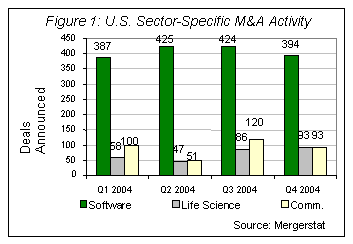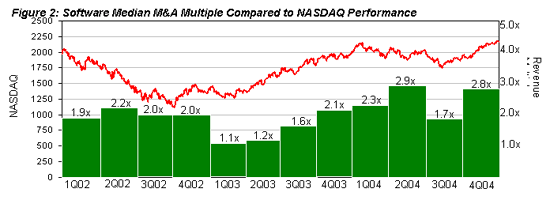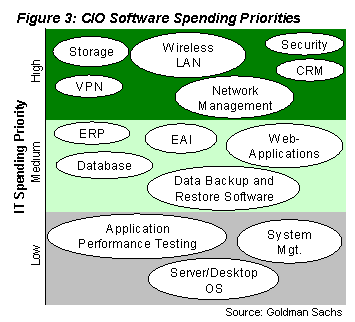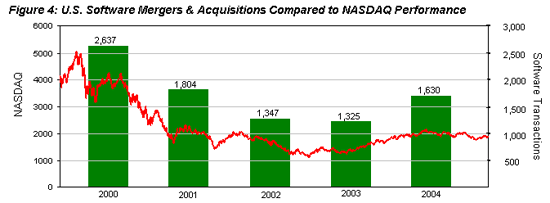|
|
| Home - Software M&A Review - Feb 05 Issue |
M&A: A Look at the Year Ahead |
By Ken Bender, Managing Director, and Allen Cinzori, Vice President - Software Equity Group, LLC
Buoyed by the flurry of mega-deals in the closing weeks of 2004, some industry pundits have declared the three-year M&A drought over. A highly respected dealmaker with a usually conservative outlook enthusiastically declared "an M&A boom in 2005".
Respected analysts pointed to the multi-billion dollar transactions, rich and hungry lending markets, sustained GDP
growth and improved corporate balance sheets as spelling “the end of the recession-era markets for M&A.”
Insightful Prognostication or Irrational Exuberance
By most measures, 2004 was a pretty good year for mergers and acquisitions. Overall U.S. deal activity rose some 15% and deal spending surged almost 44%, the best overall performance since the heady days of 2000. European dealmakers faired similarly, with a 6% increase in deal activity and a 43.5% gain in aggregate purchase price.

In the software sector, 2004 North American M&A deal volume increased 23% over 2003, but remember 2003 got off to a slow start and ramped in 2H03. Quarterly software M&A deal volume has been essentially flat for the past seven consecutive quarters (Figure 1). Software M&A valuations, however, improved quarter-over-quarter for six consecutive quarters, reached 2.9x in 2Q04, swooned in the summer to 1.7x, and remained anemic through late Fall (Figure 2).

December 2004 was the busiest deal month in history, with more than $283 billion in mergers and acquisitions worldwide. End-of-year mega-deals proliferated across industry sectors and included JP Morgan Chase / Bank One ($57.6 billion); Sprint / Nextel ($35 billion); and Johnson & Johnson / Guidant ($25 billion)
Although the prior eleven months had seen their share of multi-billion dollar deals, the December flurry fueled speculation that 2005 would be the year of the mega-deal.
End-of-year technology and software sector transactions helped stoke the fire. High profile December deals included Symantec / Veritas ($13.5 billion), Oracle / Peoplesoft ($10.3 billion), and Lenovo / IBM PC business ($1.8 billion).
What does 2004, and specifically December 2004, portend for the software industry in 2005? Are the key M&A indicators positive or negative? Will the pace of consolidation quicken? Will mega-deals proliferate? Will 2005 represent a return to the M&A boom days? Yes, no, and perhaps.

We’ve long maintained a cause and effect relationship between enterprise IT spending and software industry M&A activity and valuations. When enterprise customers freely spend IT dollars in a quest for productivity improvement and competitive advantage, public software companies are compelled to seek out and acquire new technologies and products in their own quest for competitive differentiation and incremental revenue. Some 2005 IT spending surveys are predicting a tech spending boom, based on the number of companies expecting to increase their IT budgets. The better measure, in our view, is the amount of the IT budget increase, which we believe will be modest. As a result, we’re more comfortable with the more conservative surveys of Goldman Sachs which project a moderate 3.9% increase in 2005 tech spending, and an even more modest 3.7% increase in technology capital budgets. The top CIO spending priorities, according to the GS survey, are illustrated in Figure 3. We anticipate spending patterns will continue to be erratic, with a 2004-like summer decline and a fourth quarter budget sweep / uptick.

|
|


|

